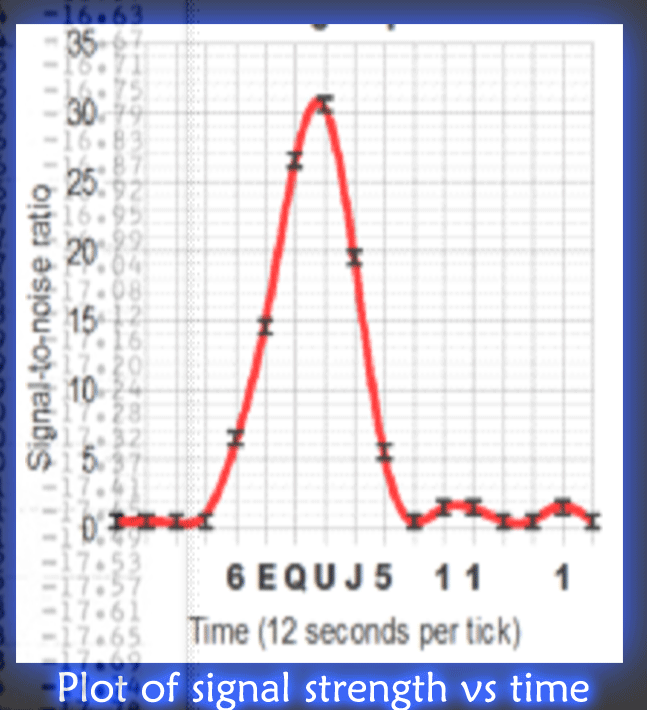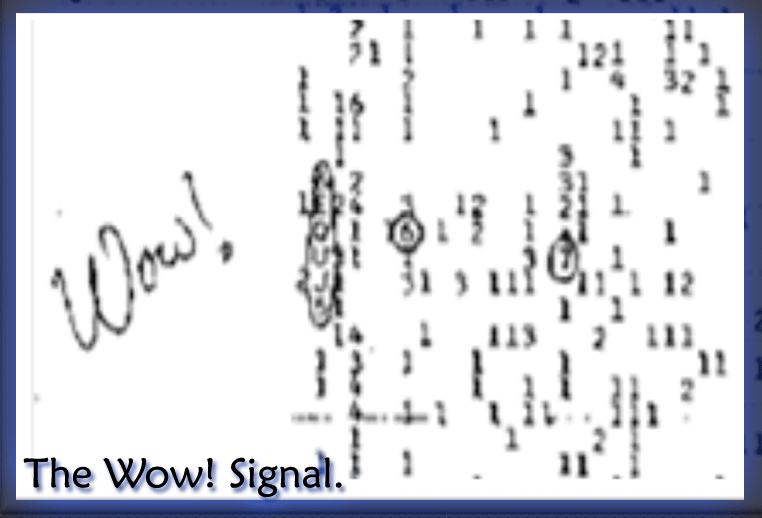|
WOW Signal It is the most famous signal which was detected on the night of 15
August 1977 at the Ohio State University Big Ear Observatory. It lasted for the
full 72 second duration that Big Ear observed it, but
has not been detected
again. Scientists believe the signal may be evidence of an extra- terrestrial
intelligence.

Signal detected on : the night of 15 August 1977.
At: The Big Ear
radio telescope of Ohio State University.
Signal was detected by: Dr. Jerry R.
Ehman
Some important points related to Wow! Signal.. 
>> The Big Ear telescope
was fixed and used the rotation of the Earth to scan the sky.
>> Big Ear was
searching the skies for an alien (extra- terrestrial) signal.
>> Its
observations were being recorded on a printout sheet.
>> A long list of letters
and numbers was continuously being churned out, one long string for every one of
the 50 channels scanned by the telescope.
>> A series of characters appeared
recording an unusual transmission at the frequency of channel 2: "6EQUJ5" the
list read.
>> This startled Big Ear volunteer Jerry Ehman, a professor at
Franklin - University in Columbus, who was monitoring the readings that night.
>> Ehman circled the signal on the computer printout and wrote the comment
"Wow!" on its side.
>> This comment became the name of the signal .
>> The
series "6EQUJ5" described the strength of the received signal over a short
time-span. In the system used at the time at Big Ear, each number from 1 to 9
represented the signal level above the background noise.
>> Two different values
for its frequency have been given 1420.356 MHz (J. D. Kraus) and 1420.4556 MHz
(J. R. Ehman).
>> The frequency 1420 is significant for searchers because, it is
reasoned, hydrogen is the most common element in the universe, and hydrogen
resonates at about 1420 Mhz, thus extraterrestrials might use that frequency on
which to transmit a strong signal. The frequency of the Wow! signal matches very
closely with the hydrogen line, which is at 1420.40575177 MHz.OW signal, complete with Jerry Ehman's famous exclamation, is
preserved by the Ohio Historical Society.
>> The signal bore expected hallmarks
of potential non-terrestrial and non-solar system origin.
|